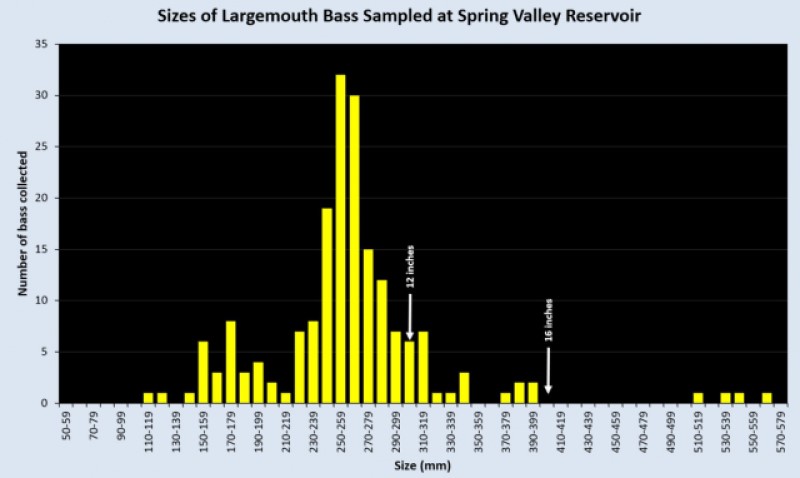The Idaho Fish and Game’s Clearwater Region manages seven lowland lakes that have Largemouth Bass in them. If you are an avid bass angler and have fished one of these lakes, you may have experienced frustrations with the scarcity of large sized bass in them. In fact, in past public meetings, some anglers complained that we needed to do more to provide quality bass fishing experiences in these lakes. In response to these comments, in 2016, we implemented new size restrictions and limits (2 fish limit, none under 16 inches) for bass in three of these lakes in hopes that it would produce more large fish that many anglers desire.
One of the lakes we changed the bass regulations for is Spring Valley Reservoir. Spring Valley Reservoir is a 55 acre lake owned by the Idaho Department of Fish and Game and is located about 11 miles to the east of Moscow, Idaho. Spring Valley Reservoir is one of our more popular lowland lakes due to its easy access, good amenities, and high catch rates for fish.
To evaluate whether the new regulations were effective in improving the size structure of Largemouth Bass in Spring Valley Reservoir, we electrofished the entire shoreline of the lake in 2019. What we found is that only 12% of the bass were greater than 12 inches and just 2% were greater than 16 inches. The figure below shows the sizes of the Largemouth Bass that were electrofished from Spring Valley Reservoir during this survey.

This data indicated that the new regulations were not effective in creating a “quality” Largemouth Bass fishery. Angler surveys suggested that the regulations were ineffective because people continued to harvest bass less than 16 inches in length. This was not totally unexpected as the bass regulations in Spring Valley Reservoir had been the same for a long time. We have seen examples in the past where it can takes years before enough people understand and follow new regulations before they become effective. Based on this information, our strategy at that time was to continue educating anglers about the new regulations and be patient for them to take effect.
Unbeknownst to us, a young man named Nicholas Hrdlicka (age 13) was assessing this bass fishery himself. Nicholas noticed that the bass were often hiding around cover, but there was a serious lack of structure for fish to hide in around Spring Valley Reservoir. He believed that if we could increase the amount of cover in Spring Valley Reservoir that it could improve the bass populations. With this idea in mind, Nicholas approached us asking what he could do to increase the cover at Spring Valley Reservoir (yes, he wants to become a fish biologist).
After some back and forth discussions between Nicholas and us, we came up with a plan. Because much of the reservoir is surrounded by trees, we decided that instead of trying to find structure to bring to the lake, we could just directly fall trees along the shore into the lake. Our goal was to fall the trees in a manner to create “sanctuary areas” where it would be difficult for people to catch bass. We settled on this plan because it met both of our goals. Nicholas wanted to create more habitat for bass and we wanted to figure out a way that would allow these fish to live long enough (8 or more years) to reach large sizes.
